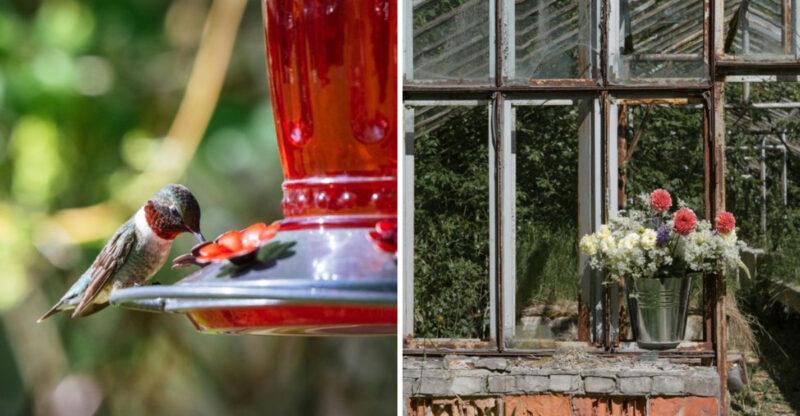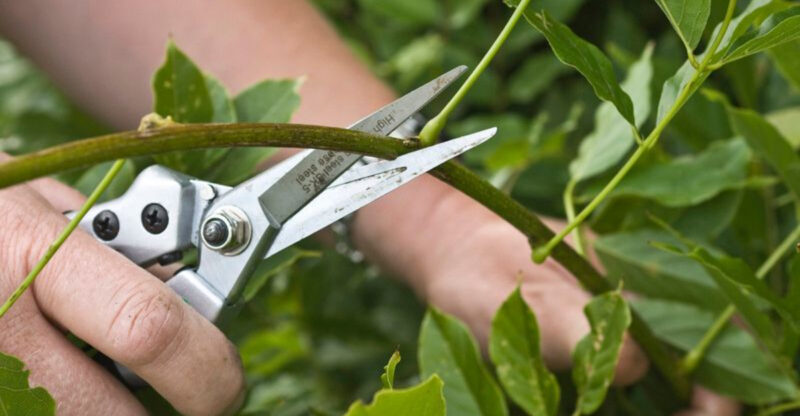7 Ways To Potentially Make Backyard Organization Easier

A cluttered backyard can quickly turn what should be a relaxing retreat into a source of stress. Between scattered tools, stray toys, and gardening supplies left out of place, it’s easy to feel overwhelmed.
While every yard is different and results may vary depending on size and layout, I’ve compiled 7 practical tips to help you organize your outdoor space, making it both functional and inviting.
1. Install Raised Garden Beds
Raised garden beds create natural boundaries for your plants while keeping soil contained. They prevent garden sprawl and make it easier to maintain specific growing areas without everything blending together.
I find that with raised beds, weeding becomes more manageable since you’re working in a defined space. Plus, the elevation means less bending and back strain when tending to your plants.
Square or rectangular beds fit neatly against fences or can be arranged in patterns to maximize growing space and minimize walkways. Consider adding labels to each bed to track what’s planted where throughout the seasons.
2. Label Plant Pots and Garden Sections
Labeling eliminates the guesswork of what’s planted where, especially during dormant seasons when plants aren’t visible. Durable garden markers made from metal, painted rocks, or weatherproof tags can withstand outdoor conditions year-round.
When starting seeds or dividing perennials, temporary plastic markers work well. For permanent plantings, consider engraved metal stakes that won’t fade or deteriorate over time.
Creating a simple garden map on paper or digitally complements your labeling system. This becomes especially helpful when planning future plantings or tracking which varieties performed best in specific areas of your yard. The combination of physical labels and a reference map makes garden management much more efficient.
3. Create a Composting Area
A designated composting area transforms yard waste into valuable garden nutrition while reducing trips to the curb with yard debris. Setting up a simple three-bin system allows you to have fresh compost at different stages new materials, actively decomposing, and finished compost ready for use.
Placing your compost bins in a partially shaded spot prevents them from drying out too quickly. Using bins with lids or covers keeps unwanted pests away and helps maintain the proper moisture balance for effective decomposition.
Keeping a small container near your kitchen door makes it convenient to collect food scraps for composting. This system turns what would be waste into a valuable garden resource while keeping your yard tidy.
4. Build a Small Shed for Seasonal Items
A compact shed provides dedicated storage for seasonal equipment that doesn’t need to be accessible year-round. Items like snow blowers, holiday decorations, or pool supplies can be tucked away until needed, freeing up your everyday storage areas.
Modern shed kits come in various sizes and materials, making installation relatively simple even for DIY beginners. Positioning your shed against a fence or in a corner maximizes usable yard space while providing convenient access.
Installing simple shelving inside multiplies your storage capacity by using vertical space efficiently. Adding hooks to the walls creates spots for hanging items like hoses, extension cords, or garden tools. Even a tiny 4×6 foot shed can dramatically improve your backyard organization.
5. Add Hooks for Hoses and Extension Cords
Heavy-duty hooks prevent hoses and extension cords from becoming tangled messes on your yard floor. Mounting these hooks at eye level on fence posts, shed walls, or the side of your house creates accessible storage that keeps these items ready for use.
Coiling hoses and cords properly before hanging them extends their life by preventing kinks and cracks. Look for hooks with rounded edges that won’t damage the material over time.
Installing multiple hooks at different locations around your yard means water or power is always within reach when needed. This distributed system eliminates dragging hoses across the entire yard for simple watering tasks. For extension cords, adding a small label to each hook noting the cord length helps you quickly grab the right one for each job.
6. Use Rolling Storage Carts
Rolling carts bring flexibility to backyard storage, allowing you to reconfigure your space as needs change. Unlike fixed storage, these mobile units can be moved to different work areas or tucked away when not needed.
Metal carts withstand outdoor conditions better than plastic models, though they may require occasional rust prevention treatment. Adding small bungee cords to secure items during transport prevents spills when moving across uneven ground.
Designating specific carts for different activities streamlines yard work one for gardening supplies, another for barbecue tools and serving items, and perhaps a third for pool or play equipment. The mobility factor means you can follow the shade throughout the day when working on projects or bring everything indoors quickly if weather threatens.
7. Add Shelving in the Shed
Installing shelves in your shed instantly multiplies your storage capacity by utilizing vertical space that would otherwise be wasted. Adjustable shelving systems allow you to customize heights based on what you’re storing, from tall garden sprayers to small seed packets.
Metal shelving holds up better in humid shed environments than particleboard options. Securing shelves to wall studs ensures they can handle heavier items like potting soil bags or power equipment.
Arranging items by frequency of use makes your shed more functional everyday items at eye level, seasonal equipment on higher or lower shelves. Adding small bins or baskets to shelves helps corral smaller items that would otherwise get lost. This systematic approach transforms a cluttered shed into an organized storage space where everything has a designated place.






